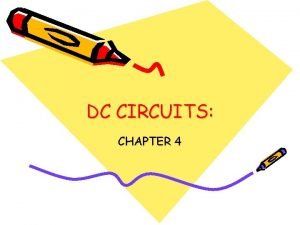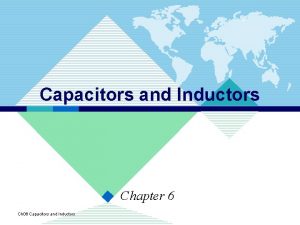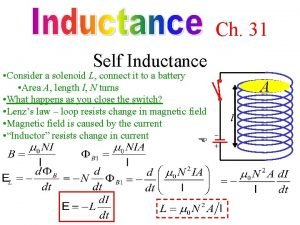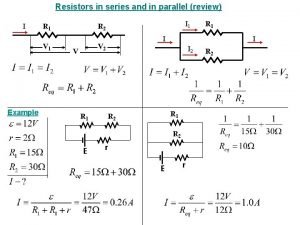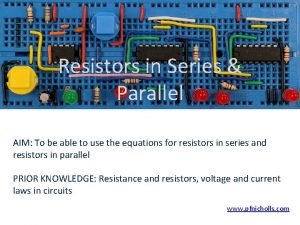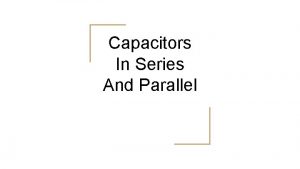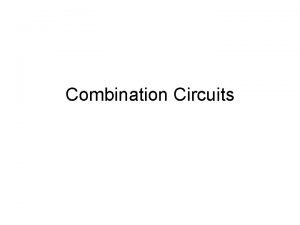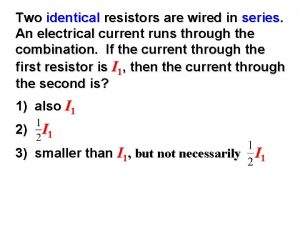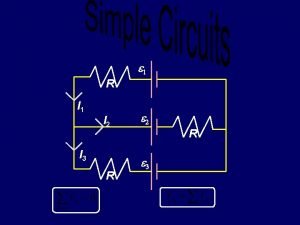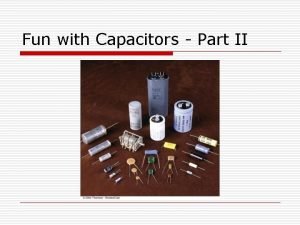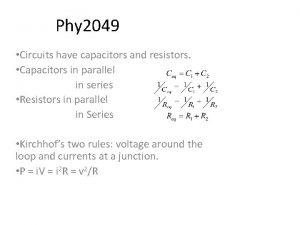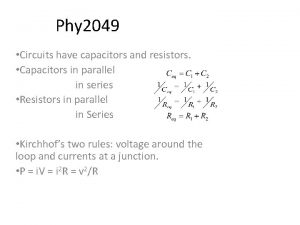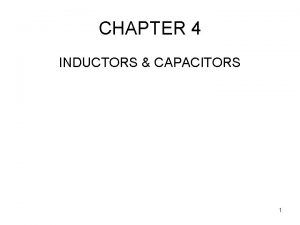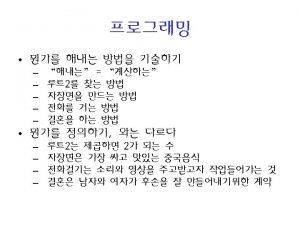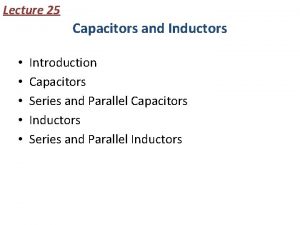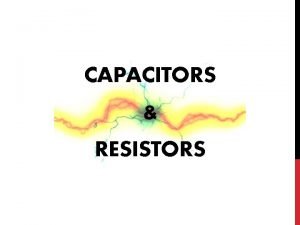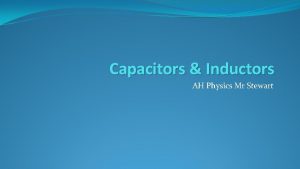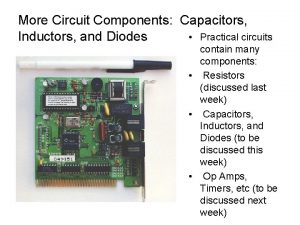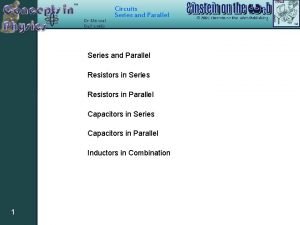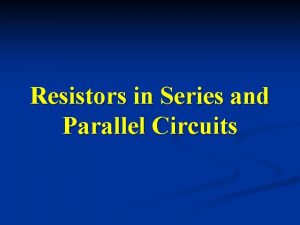Circuits Resistors Capacitors and Inductors Resistors Capacitors Inductors














- Slides: 14

Circuits Resistors, Capacitors and Inductors Resistors Capacitors Inductors 1

Circuits Resistors, Capacitors and Inductors 2

Circuits Resistors, Capacitors and Inductors Resistors slow down the electrons I 3

Circuits Resistors, Capacitors and Inductors Resistors slow down the electrons + - - 4 +

Circuits Resistors, Capacitors and Inductors In most instances, the voltage across a piece of material is proportional to the current that flows through it The constant of proportionality is called resistance, R, and has units of Ohms (Ω) This is known as Ohm’s law and is usually written as In a circuit diagram we draw resistance like this R 5

Circuits Resistors, Capacitors and Inductors As area increases, more electrons pass through it. Thus, the current is greater and the resistance is smaller As length increases, the electrons are blocked for a longer time, slowing them down even more. Thus, the current is smaller and the resistance is greater For many materials, the resistance is proportional to the length of the resistor and inversely proportional to the cross-sectional area The constant of proportionality is called resistivity, ρ, and is different for different materials 6 Table 28. 2 in the text gives resistivity for some materials

Circuits Resistors, Capacitors and Inductors Power is defined as the change in energy per unit time In the case of electric potential energy, we can write The power may be written in different forms using Ohm’s law 7

Circuits Resistors, Capacitors and Inductors +σ E Δs 8

Circuits Resistors, Capacitors and Inductors +σ V=4πkσd d E -σ 9 V=0

Circuits Resistors, Capacitors and Inductors +σ Ed V=4πkσd 0/κ d 0 d E 0 -σ 10 V=0

Circuits Resistors, Capacitors and Inductors Capacitors store the electrons + - - 11 +

Circuits Resistors, Capacitors and Inductors A capacitor is two conductors of equal but opposite charge separated by a dielectric. A dielectric is a substance made up of stationary dipoles. The capacitance of a capacitor is given by the equation. Q is magnitude of the charge of one of the conductors. V is the magnitude of the difference in potential between them. 12 The capacitance depends only on the geometry (shape and size of the capacitor, not on Q or V because they are proportional to each other.

Circuits Resistors, Capacitors and Inductors For any capacitor, the electric potential energy is given by But where is that energy found? For a parallel plate capacitor… This is the electrostatic field energy density. 13 The energy lies in the electric field!

Circuits Resistors, Capacitors and Inductors create magnetic fields - 14 +
 Voltage across an inductor
Voltage across an inductor Capacitors and inductors
Capacitors and inductors L
L Uses of inductors
Uses of inductors Advantages of parallel circuit over series circuit
Advantages of parallel circuit over series circuit Resistors in series and parallel
Resistors in series and parallel Resistors in series and parallel equations
Resistors in series and parallel equations Parallel capacitor
Parallel capacitor Simplifying circuits
Simplifying circuits Identical resistors
Identical resistors A package contains 12 resistors 3 of which are defective
A package contains 12 resistors 3 of which are defective Ceramic composition resistors
Ceramic composition resistors Kmart breadboard
Kmart breadboard Two cylindrical resistors are made from the same material
Two cylindrical resistors are made from the same material Fun with capacitors
Fun with capacitors
